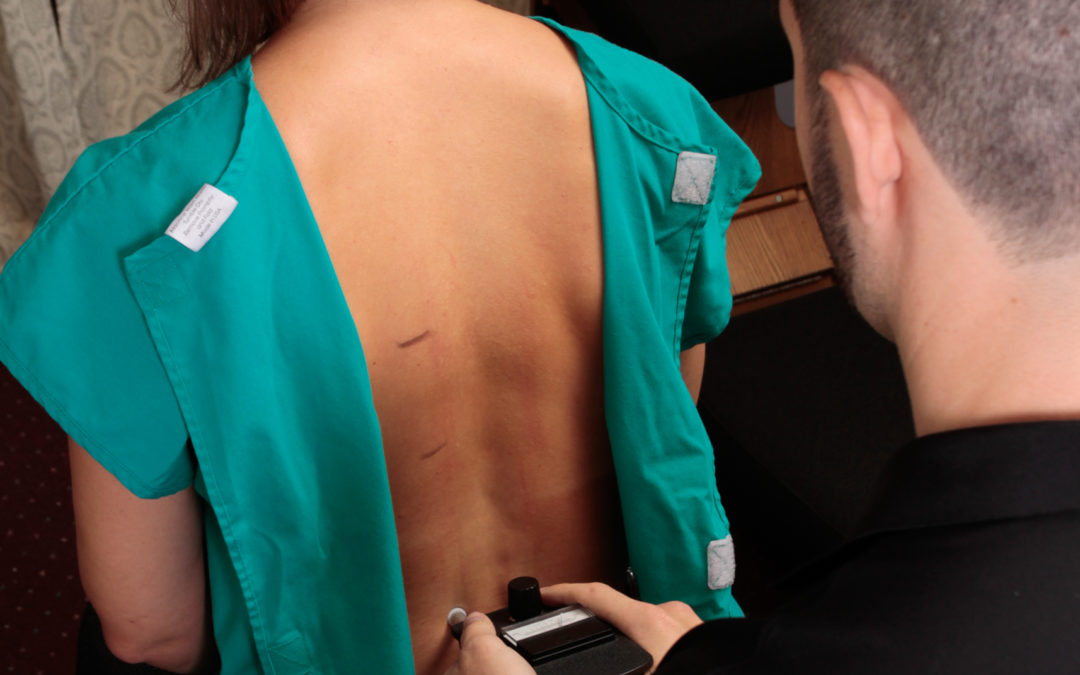
by Jasmine | Jan 25, 2018 | Yoga, Yoga Lifestyle, Yoga Therapy
BIG “Thank you” to Dr. Lars Gunnar @vitalformchiro for not only being ROOT’s first guest blogger of 2018, but for also sharing his personal story that led him to becoming a Gonstead chriopractor and professional perspective on spinal health, its vital role in preventing disease, and spinal health tips you can integrate into your life today. Enjoy!
Routines can be both good and bad. They can keep us efficient and safe but also can inhibit us from growth. During high school, I had a very basic routine that revolved around one main focus: football. Football dictated my sense of the world and my obligations fluctuated between two priorities: 1) prepping and training for games and 2) pursuing the ladies (okay, so maybe there were two points of focus to my routine). It was a much simpler time when there wasn’t much to balance and I was ready for that “smooth sail” right into college sports.
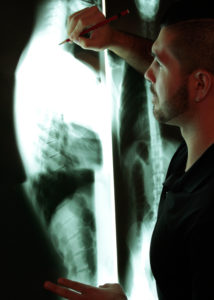
All of that came to a screeching holt during a game senior year. A single bad hit not only ended my football career but also left me with blinding back pain. My whole world, my routine, was flipped turned-upside down. This pain prohibited me from practicing, playing or even sitting for longer than 5 minutes at a time. Can you imagine not being able to even sit? For those of you who’ve experienced this kind of physical trauma you know the toll it takes on both your body and your mind.
Overnight I felt like I was robbed of everything: my comfort, my dreams, and my mobility. My focus shifted from football and ladies to finding a solution to my pain and a way back to my life. My new routine consisted of a more complex round-robin style buffet of neurologists, orthopedic surgeons, and physical therapists all of whom were only able to provide short-term relief.
I tried just about every specialist under the sun until a family friend suggested a chiropractor who specialized in the “Gonstead protocol,” which consists of a series of X-rays, exams and neurological testing before any adjustments are made. The key difference was that his process focused the alignment on the 1-2 problem vertebrae instead of trying to tackle my entire spine. He was able to tell me exactly what was wrong, where and how I could correct.
The results were nothing short of a miracle. Now that I knew what to properly focus on, my routine changed again in an instant. I could move my whole body, sit for any duration, and finally sleep. This wasn’t a temporary fix but rather a shift in overall alignment and spinal health. I learned that the key to my wellness was my spine. I was so inspired by this transformation that I to became a Gonstead trained chiropractor to help others on their path to healing.
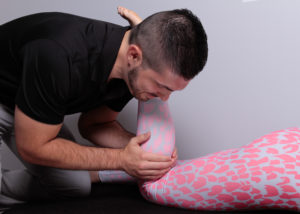
Throughout my day, I am incredibly fortunate to serve a diverse population that need care: acute injuries, chronic pain, infectious diseases, chronic diseases – all coming to my office for help. Through patient education and the experience of specific scientifically measured adjustments, my patients encounter first-hand how a functioning spine is a cornerstone of a healthy life.
Tips from a chiropractor
The feelings of frustration and panic that I felt right after my injury are something that everyone can relate to at some level, especially today. We all seem to be caught in a loop of organized chaos and a routine of short-term fixes. Even without any physical injuries per se, our ongoing quest to find the ever elusive “work life balance” takes a physical toll on our bodies. If I just look at Facebook and Instagram alone, it seems like everyone is working over 10 hour days, nurturing friends and family, working on side projects and still finding time to snap a flawless looking selfie. The more we focus on doing, the less we stop to align our body’s and mind’s best interest.
The truth is that many of us are just trying to survive within a demanding society and our biological functions (like breathing and digestion) as well as our needs (like sleep) have been drastically impaired. Stress, exercise, nutrition and sleep all play a role on our body and our nervous system because of how they are so closely tied to our spine.
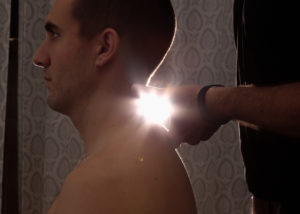
In 1921, Dr. Henry Winsor (a medical doctor in Haverford, Pennsylvania) became fascinated with chiropractors and osteopaths and their ability to treat people suffering from conditions like heart disease, kidney disease, and lung disease without drugs or surgery. Winsor was inspired to investigate these practices and discovered that there was a near 100% correlation with the internal organs having some form of disease and the same area of the spine being mal-positioned. He also found that changing spinal curves in various degrees of flexion or extension changed the blood flow and nerve flow to the brain and organs.
What does this all mean? The way we move our spine influences everything and lack of movement impacts our organ health which could leave us vulnerable to diseases. Our spine gets nutrition from movement, which pushes nutrients in and pulls waste products out (like the inhales and exhales in breathing). Lack of spinal mobility or a toxic environment such as chronic inflammation or nutrient deficiencies will affect this process. So, what we put in our body is just as important as how we move our body.
When I work with my patients who suffer from similar and worse types of pain, diseases and discomfort, my approach is truly comprehensive. I encourage the following mindful movements and routines that focus on flexibility and also stimulate the nervous system in a positive way.
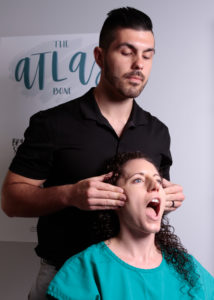
Reduce Stress: All of us are quite familiar with physical exhaustion- not having anything left in the tank to push through a workout or run another mile, but we are still so behind in prioritizing our mental and emotional exhaustion. These pain points look and feel quite a bit different than an achy back and some of us ignore it entirely.
Most of us have at least heard of the cognitive benefits of managing our stress which range from improved short and long term memory, boosted mental endurance and strengthened creativity. But more and more studies are showing that reducing stress can also have enormous impacts on our bodies. By decreasing stress, we can reduce the way we digest and absorb nutrients – vital to our spine, reduce systemic inflammation (whole body compromise/ contributor for chronic pain), strengthens our immune system and quite literally helps you live longer. What I recommend to my patients and myself:
- Quieting and slowing your mind for a short time before you start your day or when you have a spare moment
- Take periodic quiet minutes, yoga, self-talk and anything else that fills up your bucket (my personal favorites which keep me grounded so I can give my best to the next patient)
Take a breath and slow yourself down before you start your day to be the champion of your day.
Prioritize Movement: Spinal extension aka back bending isn’t just for stretching but actually increases blood flow and nerve activity to the brain by at least 30%. Don’t forget to stand up during the day not just because it’s good for your spine and joints but to increase your energy, ensure you’re getting proper oxygen and nutrients to your brain. What I recommend to my patients and myself:
- Yoga asanas (poses) also have a muscular component and a visceral (organ) component and are great for feeding nutrients to the spine.
- Spinal rotation, lateral bending and flexing all stimulate different organs to speed up or slow down with the ultimate goal of bringing balance to the body.
Get up and move, not just for aesthetics but for your entire well-being.
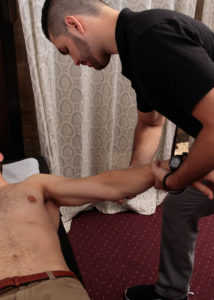
Minimize Toxins: I know that most of us aren’t actively seeking toxins – unless you’re a bad guy from a super hero movie – but simply being more conscious of what we buy can have tremendous impacts on our spinal health. What I recommend to my patients and myself:
- Read food labels to make sure you are limiting refined sugars, artificial ingredients, preservatives and fake sugar substitutes reduces inflammatory processes. Some sugar substitutes have been shown to contribute to dementia, alzheimers and other neurodegenerative disorders.
- Drink clean- purified or filtered water. Tap water is known to have trace metals that are detrimental to the health of our nervous system. Copper, mercury, manganese among other toxins are in tap water and these do not belong in our bodies at high levels.
- Alkaline water has gotten quite a bit of traction over the recent years and the scientific data on it is still mixed. Does it affect your cellular PH in a positive manor? Maybe, but at the very least you are not consuming tap water or dead water (no positive benefit).
- Sleep with your phone away from your bed- radiation emits from your phone and has been shown to be absorbed into neural tissue (YOUR BRAIN!) and cause damage to DNA.
- Having a healthy environment in your body will help preserve health along with stimulating healing where it is needed.
“The preservation of health is easier than the cure for disease” – B.J. Palmer.
Get the Right kind of Sleep: Sleep has now been ranked second next to only food intake for importance in weight reduction and restoration of health. You need a nightly reset to allow hormones to stabilize, digestion and absorption to occur and recharge your learning/attention pathways in your brain. What I recommend to my patients and myself:
- “Sleeping is a dangerous sport,” which simply means that position matters. There aren’t many activities we do for 6-9 hours at a time and sleep position can help or hurt us in our recovery process. Side and back sleeping are optimal positions while keeping the head in a neutral position.
- If you want to avoid being hunched over later in life than don’t sleep curled up into ball, or using too many pillows which can all harm the spine.
You are what how you sleep.
The spine is the bridge between the brain and the body and the body to the brain. Having a properly functioning spine is the key to a metabolically balanced nerve system, long lasting health and an injury free life. Having your spine checked by a qualified practitioner that knows spinal mechanics, the art of a spinal correction and focuses on overall well-being is paramount.
For specific spinal corrections a Gonstead trained chiropractor will be your ideal practitioner. To find one near you there are multiple directories www.gonstead.com, www.gonsteadseminars.com. Choosing a practitioner can be difficult depending on your location as there are about 500 practicing Gonstead chiropractors in the world.
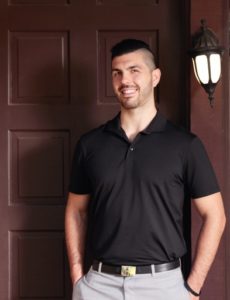 Dr. Lars Gunnar DC, BS, is a family chiropractor and the founder of Vital Form Chiropractic in Pasadena California. A graduate of San Diego State University and Southern California University of Health Sciences. Along with practicing the Gonstead system he has advance training in sport and extremity injuries, pregnancy care, pediatric development and scoliosis. Several individuals were instrumental in learning these skills including: Dr. Brad Ping, Dr. David Fowler, Dr. Jeremiah Thompson, The Gonstead Seminar staff, Dr. Ian Rossborough, Gonstead Methodology Institute and The Gonstead Clinical Studies Society. Dr. Gunnar’s goal is to inspire people to take control over their own health and to strive to be the highest expression of themselves.
Dr. Lars Gunnar DC, BS, is a family chiropractor and the founder of Vital Form Chiropractic in Pasadena California. A graduate of San Diego State University and Southern California University of Health Sciences. Along with practicing the Gonstead system he has advance training in sport and extremity injuries, pregnancy care, pediatric development and scoliosis. Several individuals were instrumental in learning these skills including: Dr. Brad Ping, Dr. David Fowler, Dr. Jeremiah Thompson, The Gonstead Seminar staff, Dr. Ian Rossborough, Gonstead Methodology Institute and The Gonstead Clinical Studies Society. Dr. Gunnar’s goal is to inspire people to take control over their own health and to strive to be the highest expression of themselves.
To keep up with Dr. Gunnar follow @Vitalformchiro on IG and to learn more about his practice visit: vitaformchiropractic.com (coming soon!)
Ready to book your appointment with Dr. Gunnar?
Contact:
Vital Form Chiropractic
Institute of Functional Biomechanics

by Jasmine | Jun 30, 2017 | Yoga, Yoga Therapy
A ROOT Awakening: Time For A Gut Check – Yoga Therapy for Type 1 Diabetes and Gastroparesis
Guest blogger: Evan Soroka, evansoroka.com, @diabeticyogini
A big thanks to Evan for sharing her insights with the ROOT Tribe! Check out her bio below and learn more through her newsletter.
Gastro-whatso-sis? Don’t worry, I hadn’t heard about it either until I realized that I had it. Gastroparesis, also known as delayed stomach release, slows down or even stops the stomach’s ability to release food into the small intestine. It’s a common side effect of diabetes and other chronic illnesses, but most common in type 1 diabetics who have been diabetic for over 10 years (me!!)(3). This causes a trifecta of gastrointestinal problems such as gas, bloating, acid reflux and general feelings of ick and discomfort. And if that wasn’t bad enough, this also wreaks havoc on blood sugar control, which inhibits a type 1 diabetic’s ability to discern when to take insulin for a meal.
 As a type 1 diabetic, for years I had suffered from all of gas, bloating – you name it – and uncontrollable blood sugar numbers. My inability to anticipate my digestion time caused me to miscalculate my insulin to carbohydrate ratio, which led to crashes followed by subsequently a skyrocket – think blood sugar yoyo. Its onset was cyclical but unpredictable and extremely disruptive to my life. I had no clue what was causing this!
As a type 1 diabetic, for years I had suffered from all of gas, bloating – you name it – and uncontrollable blood sugar numbers. My inability to anticipate my digestion time caused me to miscalculate my insulin to carbohydrate ratio, which led to crashes followed by subsequently a skyrocket – think blood sugar yoyo. Its onset was cyclical but unpredictable and extremely disruptive to my life. I had no clue what was causing this!
Like a good diabetic yogini, I tried every natural remedy under the sun. Candida-cleanse, parasite cleanse, I went vegan, I went paleo, I went auto-bleeping-immune paleo…I took A LOT of vitamins. When that didn’t work, I went the other route: antibiotics, sonogram and MRI.
To no avail, I spent a small fortune on trying to figure it out. I didn’t “figure it out” until I started using a continuous glucose monitor. With a newfound ability to be hyperaware and vigilant of my blood sugar patterns, I saw a correlation between my stomachaches and blood sugar levels. I read about gastroparesis in Dr. Bernstein’s Diabetes Solution and was shocked to see my whole life in one description. When I asked my doctors and nutritionist they all responded like “oh yeah, at this point with 20 plus years of diabetes, you should definitely have that.” Light bulb!
So, what causes gastroparesis? Gastroparesis is caused by damage to the vagus nerve, which can be occur with illness or, in my case, high blood sugars. The vagus nerve, is a vital part of the body’s natural ability to relax and aids in parasympathetic control of the heart, lungs, stomach and digestive tract. The health and resilience of the vagus nerve is known as vagal tone and healthy vagal tone helps us regulate and calm our bodies after a fight-or-flight stress response to danger. Low vagal tone does the exact opposite (1), which in turn leads to higher levels of stress and decreased ability to control blood sugar – a diabetics worst nightmare.
This is where we fuse yoga therapy and diabetes. Here’s what we know so far: gastroparesis is caused by higher blood sugars that damage the vagus nerve, a side effect of gastroparesis is higher blood sugars and the vagus nerve is important to our body’s ability to regulate stress. The key to healing the body’s response to stress is by improving vagal tone. You can stimulate vagal tone and reduce gastroparesis flare-ups by specific yoga therapy techniques that aid in parasympathetic activation. Here are what I’ve found to be most effective:
Improve Vagal Tone:
Breathing: If you monitor your heart rate while breathing you will find that when you inhale your heart rate rises and when you exhale, your heart rate lowers (2). In yoga, we apply a specific breathing method called ujjayi pranayama or victorious breath, which allows for a larger threshold of breath and improved control of breath. Ujjayi pranayama is a slight valve of the glottis in the back of your throat. Breathe in and out the nose by slightly closing the glottis opening versus breathing from the nostrils.
Challenge: Spend a few minutes watching your breath. Progressively lengthen your exhale so it become twice as long as your inhale. Make sure you do this without strain in your breath or you will trigger a stress response. Stay for 5 minutes.
Yoga poses: If exhale is calming, so too are twists and forwards bends. Always move into twists and forward bends on exhale. Try moving into a standing forward bend or twist on exhale, lengthening your exhale each time, then stay for several breaths maintaining ujjayi awareness.
Caution: twists and flexion should be done lying on the back before any seated twists.
Meditation: Meditation is good for everyone, but just like flossing your teeth most of us do not do it enough. After you practice some dynamic forward bends and twists, sit and practice your breathing exercises. Next, relax your breath and simply feel your breath move in and out without trying to breathe. Watch what arises in the field of your attention. Your breath affects your mind and your mind affects your breath. If you’re just getting started on meditation, you can explore a few popular apps like Headspace and Calm.
Agni Sara: Dr. Bernstein refers to nauli as a way to stimulate the stomach to release. Nauli is considered a purification technique. There are many versions of nauli and can be quite complicated for even an experienced yoga practitioner. I recommend starting simple as on ce again, you do not want to induce a stress response.
ce again, you do not want to induce a stress response.
- Stand with your feet slightly wider than hip width distance.
- Bend your torso forward about 1/3 of the way placing your hand on your thighs.
- Exhale completely and pause after exhalation.
- While you pause, deeply draw your abdominal muscles in and up towards the ribcage.
- Hold breath empty a few seconds before you release.
- Try to relax mind when pausing.
- Slowly inhale and release belly.
- Repeat 12x
Just like yoga therapy, type 1 diabetes and gastroparesis do not have a one-size fits all cure. We cannot cure type 1 diabetes (yet) but we can manage its symptoms and side effects with patience, curiosity and kindness. Be patient with the process as it will not be automatic. With practice, you will become progressively more aware of not only gastroparesis onset but also how other factors in your life (and low vagal tone) may in fact be contributing to your level of suffering. If you want to learn more about how to use yoga therapy to manage type 1 diabetes or any other chronic condition, please subscribe to my newsletter.
Bibliography:
1.https://mosaicscience.com/story/hacking-nervous-system
2.http://www.diabetes.org/living-with-diabetes/complications/mental-health/stress.html?referrer=https://www.google.com/
3. http://www.webmd.com/diabetes/type-1-diabetes-guide/diabetes-and-gastroparesis#1
4. Bernstein, Richard K. The Diabetes Solution. Little Brown Publishers. 1997.
©Evan Soroka Yoga Therapy 2017
 Evan Soroka, C-IAYT, E-RYT 500, is based out of Aspen, Colorado. She specializes in the art of yoga therapy, a blending of modern-day physical & psycho-therapy with the ancient science of ayurveda and yoga. Evan trained in the tradition of Viniyoga™ with Gary Kraftsow and the American Viniyoga Institute. Evan skillfully guides clients to reclaim their power from the stressors of modern-day society all within a structure that is tangible and accessible to people from all walks of life. Working with Evan you will gain the tools to become your own masterful conduit for change. She attributes her health and wellbeing to the science of yoga therapy discovered through her own personal journey with type 1 diabetes as well as under the seasoned direction of her teachers Gary Kraftsow and Rod Stryker. You can find her online at evansoroka.com and on instagram @diabeticyogini
Evan Soroka, C-IAYT, E-RYT 500, is based out of Aspen, Colorado. She specializes in the art of yoga therapy, a blending of modern-day physical & psycho-therapy with the ancient science of ayurveda and yoga. Evan trained in the tradition of Viniyoga™ with Gary Kraftsow and the American Viniyoga Institute. Evan skillfully guides clients to reclaim their power from the stressors of modern-day society all within a structure that is tangible and accessible to people from all walks of life. Working with Evan you will gain the tools to become your own masterful conduit for change. She attributes her health and wellbeing to the science of yoga therapy discovered through her own personal journey with type 1 diabetes as well as under the seasoned direction of her teachers Gary Kraftsow and Rod Stryker. You can find her online at evansoroka.com and on instagram @diabeticyogini
Learn how you can work with Evan personally today!
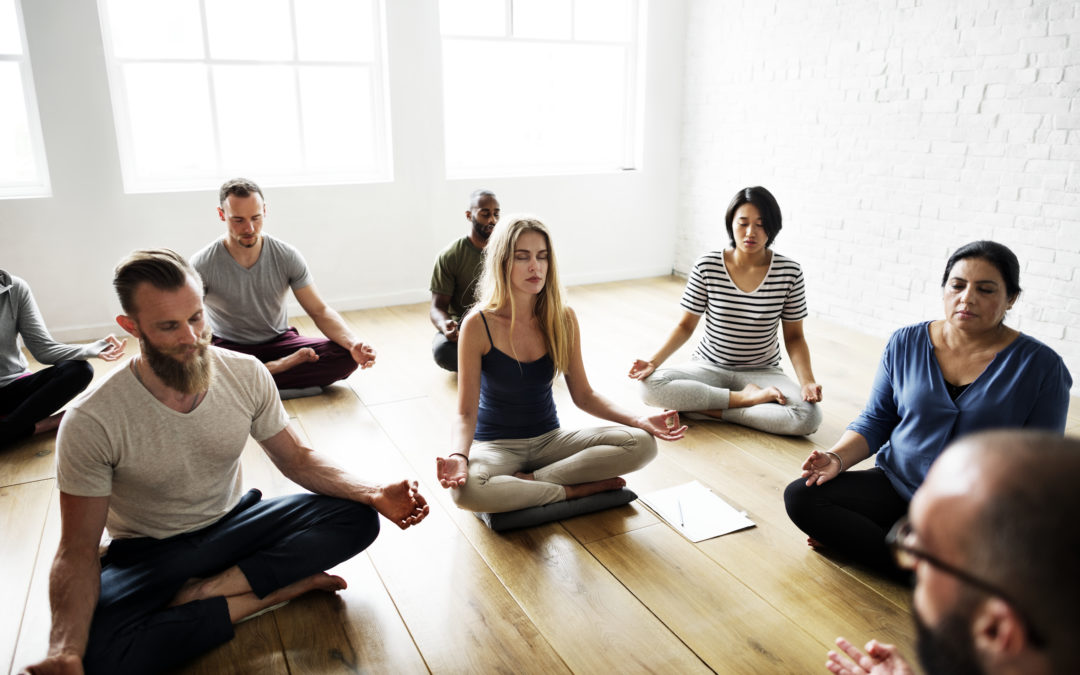








 Dr. Lars Gunnar DC, BS, is a family chiropractor and the founder of Vital Form Chiropractic in Pasadena California. A graduate of San Diego State University and Southern California University of Health Sciences. Along with practicing the Gonstead system he has advance training in sport and extremity injuries, pregnancy care, pediatric development and scoliosis. Several individuals were instrumental in learning these skills including: Dr. Brad Ping, Dr. David Fowler, Dr. Jeremiah Thompson, The Gonstead Seminar staff, Dr. Ian Rossborough, Gonstead Methodology Institute and The Gonstead Clinical Studies Society. Dr. Gunnar’s goal is to inspire people to take control over their own health and to strive to be the highest expression of themselves.
Dr. Lars Gunnar DC, BS, is a family chiropractor and the founder of Vital Form Chiropractic in Pasadena California. A graduate of San Diego State University and Southern California University of Health Sciences. Along with practicing the Gonstead system he has advance training in sport and extremity injuries, pregnancy care, pediatric development and scoliosis. Several individuals were instrumental in learning these skills including: Dr. Brad Ping, Dr. David Fowler, Dr. Jeremiah Thompson, The Gonstead Seminar staff, Dr. Ian Rossborough, Gonstead Methodology Institute and The Gonstead Clinical Studies Society. Dr. Gunnar’s goal is to inspire people to take control over their own health and to strive to be the highest expression of themselves.



Recent Comments